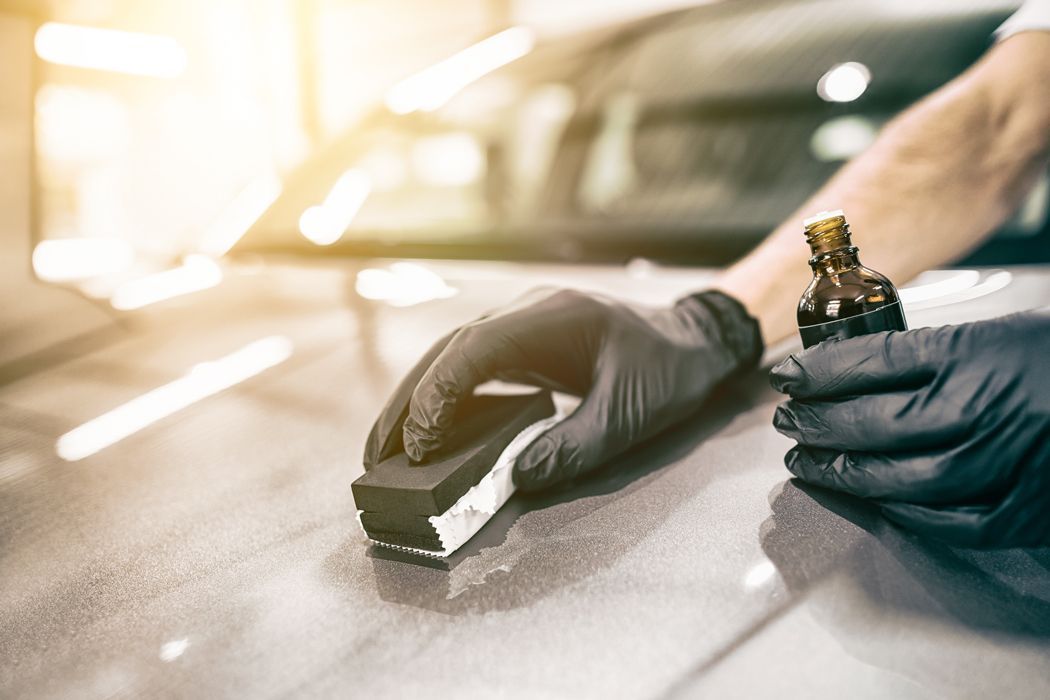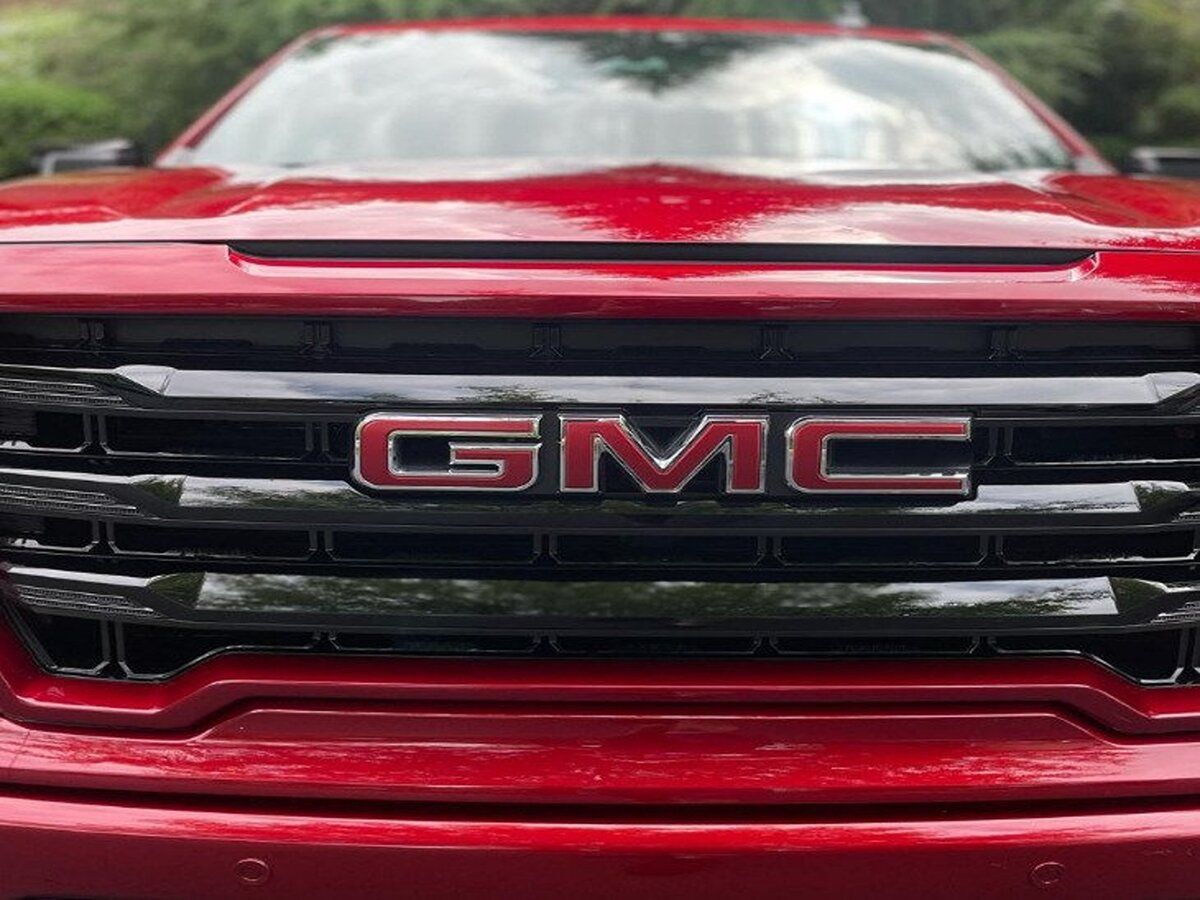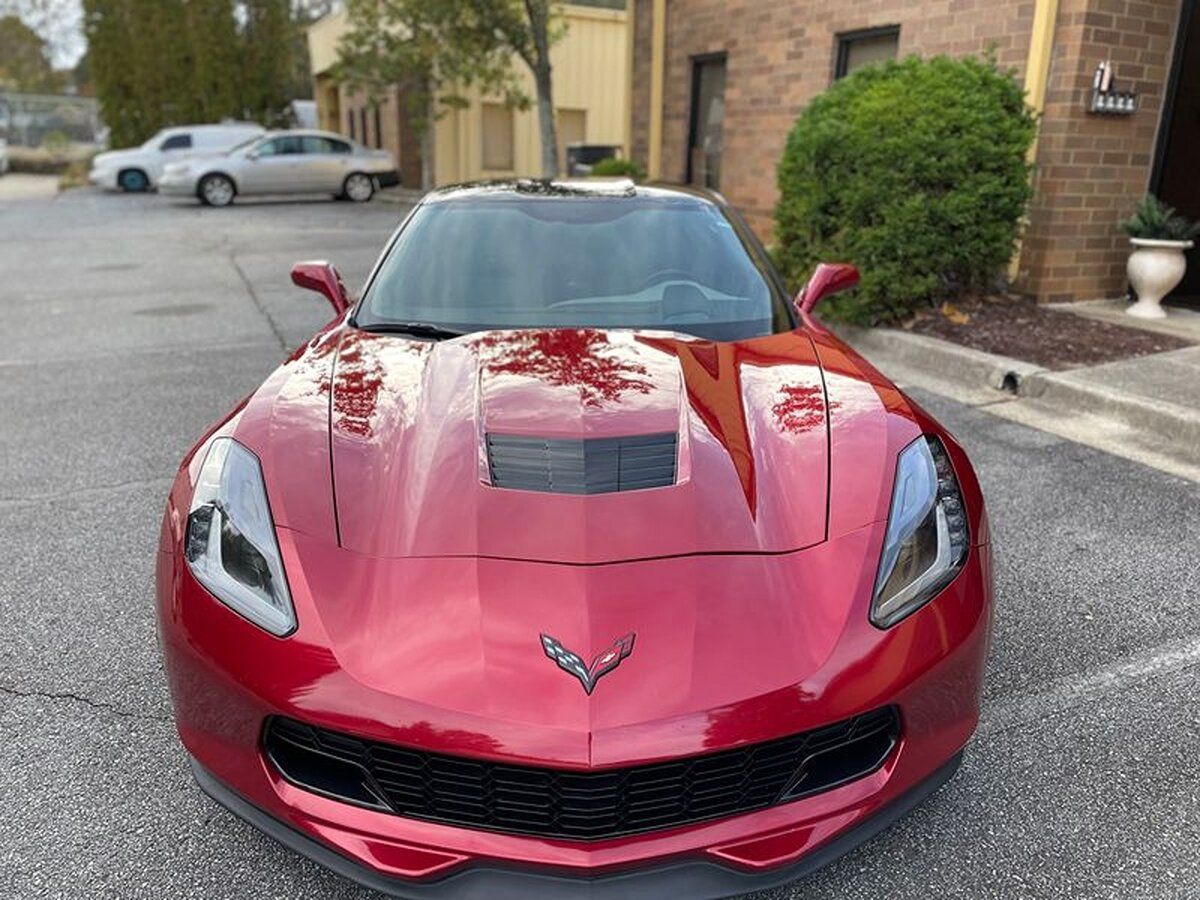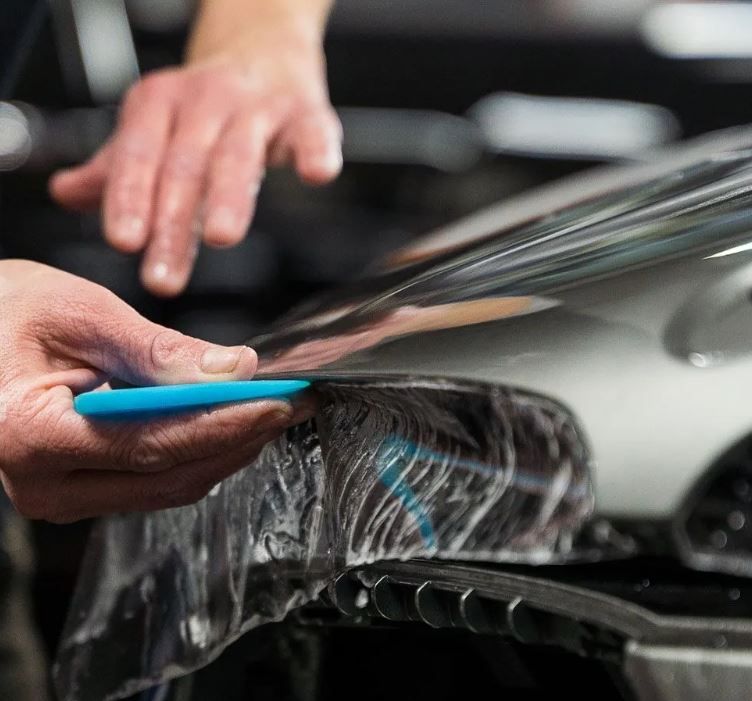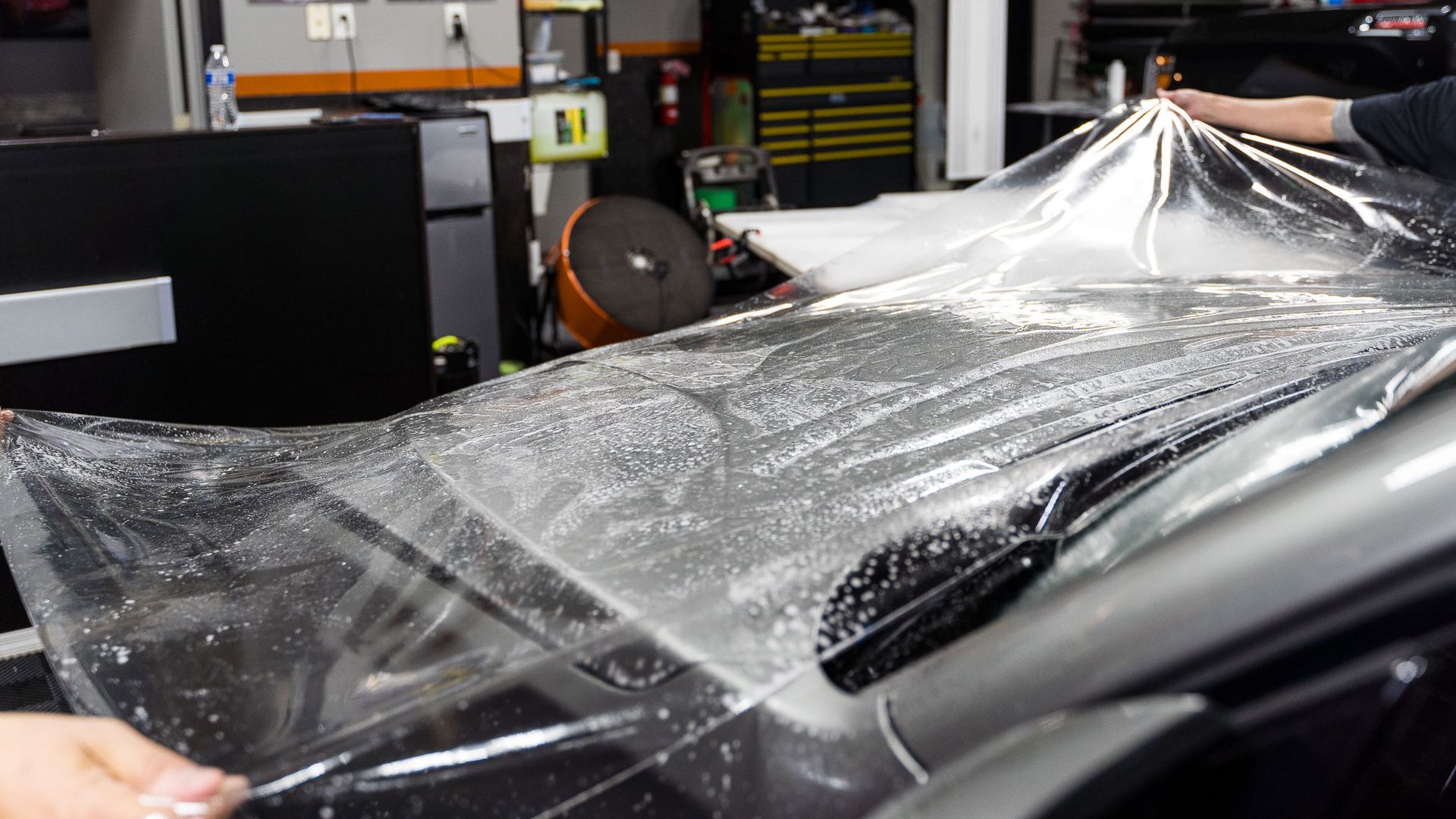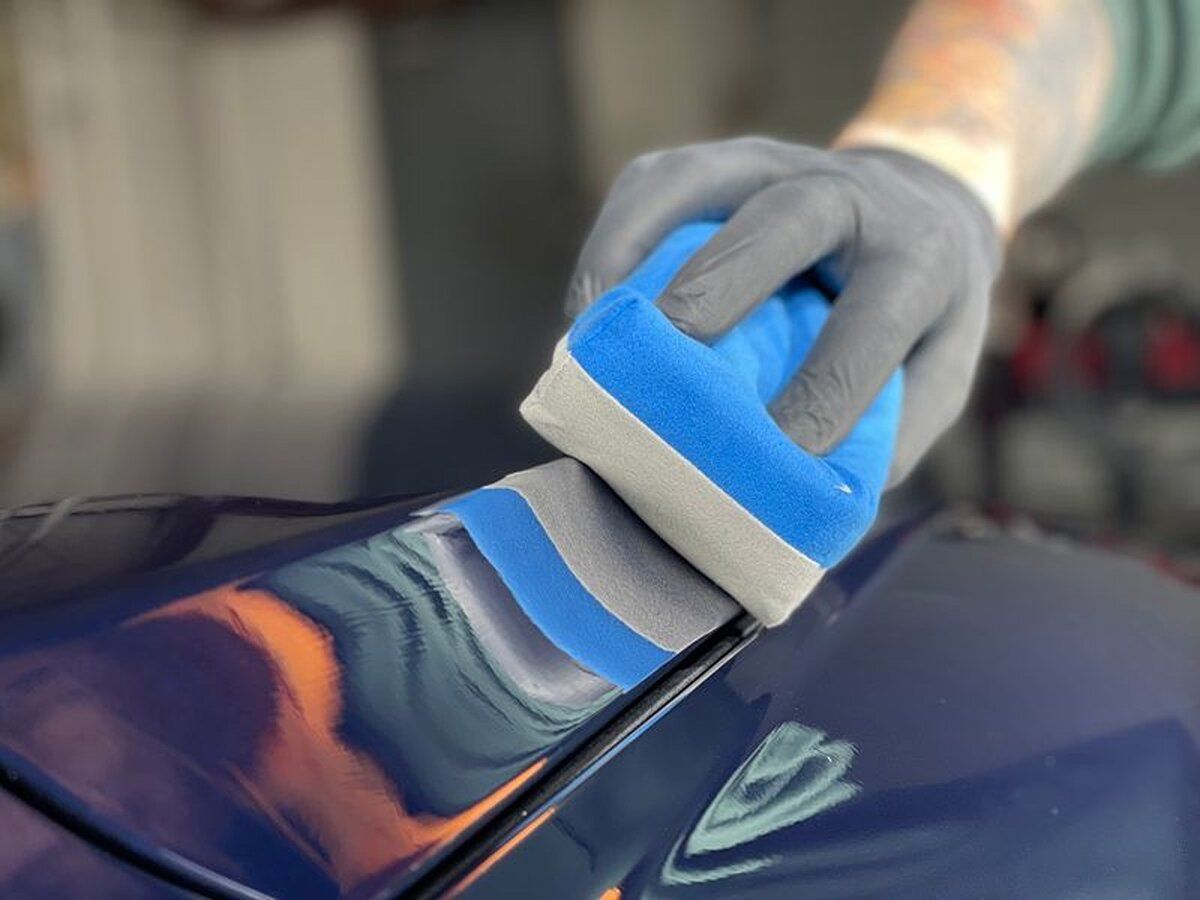When to Replace Your Ceramic Coating: Signs, Tips, and Maintenance
GET A QUOTECALL (770) 722-3486
The time to replace your ceramic coating hinges on certain visual cues. A dulling gloss, a lack of water beading on the paint, or any peeling coatings signal a potential reduction in protection. Another less noticeable but equally important sign is when the paintwork starts to look faded or oxidized, a subtle change that requires an eye for detail. But don't despair, proper maintenance can extend your coating’s life and prevent early wear. Now, let’s decode these signs and maintenance tips in more detail.
It is generally recommended to consider replacing your ceramic coating when you notice a decrease in water beading, significant dullness in the finish, increased surface contaminants, or visible signs of oxidation. While some basic ceramic coatings may last about a year, standard coatings can endure for up to three years, and elite options may provide protection for as long as five years with proper care and maintenance.
Signs That it's Time to Replace Your Ceramic Coating
Your vehicle's ceramic coating is like a shield, protecting the paint from environmental and chemical contaminants. It fends off water, dirt, and even UV rays. But like any shield, it can wear down over time, needing replacement to keep performing at its best. Here are a few telltale signs that your ceramic coat requires some attention:
- Dull Glossy Finish: If the glossy finish of your car has significantly dulled, it could indicate that the ceramic coating is losing its effectiveness. The purpose of the coating is to enhance and protect the shine of your car, so if it starts looking lackluster and dull, it’s time to consider replacing the ceramic coating.
- Loss of Hydrophobic Properties: One of the key benefits of a ceramic coating is its hydrophobic nature, which causes water to bead up and roll off the surface. If you notice water droplets no longer bead on the paint but spread out or flatten instead, this indicates a loss of hydrophobic properties in the ceramic coating.
- Increased Surface Contaminants: If you observe that dirt, grime, and other contaminants are sticking to your car’s surface more readily and are harder to wash off, it may be a sign that the ceramic coating is needing replacement. The coating is designed to repel such substances, so an increase in surface contaminants suggests it might be time for a refresh.
Picture this: You're washing your car and notice that instead of beading up and rolling off the paint like before, water sits in little puddles and takes forever to dry. When you inspect these areas further, you realize that not only has the gloss disappeared but parts of the coating are thinner, leaving behind spots without any protection at all. Recognizing these signs early on is crucial, as they signify a loss of protective properties, leaving your vehicle vulnerable to elements such as UV rays and environmental contaminants. However, with routine maintenance and proper care, you can extend the lifespan of your ceramic coating significantly.
Visible Exterior Damage and Decreased Protection
When visible oxidation becomes apparent on your ceramic coating, it's a clear indication that the protective layer is starting to wear out. Not only do these imperfections affect the glossy finish of your vehicle, but they also signify a decreased level of protection for the underlying paint. The ceramic coating acts as a shield against harmful environmental elements such as UV rays, bird droppings, tree sap, and general wear and tear. With diminished protection, the underlying paint is left vulnerable to these threats, which can lead to premature aging and deterioration.
To put it into perspective, imagine the ceramic coating as the outer armor of your vehicle. Just as battle-worn armor would leave a warrior exposed to enemy attacks, a deteriorating ceramic coating leaves your vehicle's paint susceptible to damage from environmental aggressors. Moreover, decreased water beading and gloss are clear indicators of a fading protective layer. Ceramic coatings are intended to repel water effectively and maintain a high-gloss finish. However, as the coating wears off over time, you may notice that water no longer beads on the surface as efficiently as it previously did. This means that moisture is no longer being repelled effectively, leaving your vehicle's paint at risk of water spots and potential damage from prolonged exposure to water.
How does this happen?
The loss of hydrophobic properties occurs gradually as the ceramic coating breaks down due to age. You can take proactive measures to address these obvious signs of damage and preserve the integrity of your vehicle's exterior by being aware of their implications for the ceramic coatings' protection. It's comparable to how a raincoat loses its water-repelling ability after being worn for an extended period, eventually needing some care and touch-up treatment to restore its original functionality. You can take proactive measures to address these obvious signs of damage and preserve the integrity of your vehicle's exterior by being aware of their implications for the ceramic coatings' protection.
Lifespan of a Ceramic Coating
The longevity of a ceramic coating is vital, significantly impacting its effectiveness in safeguarding your vehicle's exterior. While the standard duration generally falls between two and five years, this can vary based on product quality and maintenance routines. Basic ceramic coatings typically offer around one year of protection, suitable for individuals seeking short-term coverage. Standard coatings can maintain effectiveness for about three years, catering to those desiring a longer-term solution. Elite coatings, known for their exceptional durability, can provide protection for up to five years, offering an extended shield against environmental elements.
It's important to remember that these estimates are subject to change based on variables such as climate conditions, frequency of car washing, and exposure to harsh chemicals or abrasive cleaning methods. Factors like extreme weather conditions and improper care may expedite deterioration, influencing the coating's longevity. For instance, exposure to harsh sunlight and high temperatures might expedite degradation, leading to premature wear and reduced effectiveness. Conversely, adhering to meticulous care practices such as using gentle washing methods and avoiding extreme climate conditions can significantly contribute to prolonging the lifespan of the ceramic coating.
Understanding the anticipated lifespan of different types of ceramic coatings provides valuable insight into selecting the most suitable option based on your specific requirements and expectations. By aligning your selection with these estimations, you can effectively strategize your maintenance routine and ensure that your vehicle's exterior receives optimal protection throughout its designated lifespan.
Extending the Lifespan of Your Ceramic Coating
Just like any other investment, taking good care of your ceramic coating is essential for making it last. Let's explore some practical tips that can help you keep your car's surface looking fresh and protected for as long as possible.
- Regular Washing: Frequent and gentle washing with clean water is one of the best ways to prevent the buildup of contaminants on your car's surface and extend the lifespan of the ceramic coating. Contaminants such as dirt, dust, bird droppings, and other pollutants can adhere to the ceramic coating over time. By regularly washing your car with clean water, you can effectively remove these contaminants before they have a chance to cause damage. Plus, using clean water ensures that no abrasive particles come into contact with the coating, preventing any unnecessary wear and tear.
- Avoiding Machine Polishers: While machine polishers may seem convenient for maintaining the shine of your car's surface, they can actually do more harm than good when it comes to ceramic coatings. The high-speed rotation and friction generated by machine polishers can wear away the protective layer of the ceramic coating, reducing its effectiveness over time. Keep in mind that, when it comes to preserving the integrity of your ceramic coating, a gentle touch is key.
- Avoiding Extreme Weather Conditions: Direct exposure to extreme weather conditions, such as prolonged, intense sunlight or harsh winters, can deteriorate the ceramic coating over time. The intense UV rays from continuous sunlight can gradually weaken the protective properties of the ceramic coating. Likewise, harsh winters with freezing temperatures and snowfall can also take a toll on the coating's resilience. Parking your vehicle in garages or shaded areas whenever possible can significantly mitigate the impact of extreme weather conditions on your ceramic coating.
By incorporating these proactive measures into your car care routine, you can significantly enhance the longevity and performance of your ceramic coating, ensuring that your vehicle maintains its sleek appearance while staying well-protected against external elements.
Importance of Professional Ceramic Coating Replacement or Reapplication Service
Opting for a professional ceramic coating replacement or reapplication service is crucial for maintaining your vehicle’s aesthetic and protective qualities. Here’s why professional care is essential:
- Expert Application: Professionals have the training and experience to apply or reapply ceramic coatings correctly. The process requires precision and attention to detail to ensure an even, bubble-free layer that adheres properly to the paint. DIY applications often result in uneven coating, streaks, or missed spots, reducing the effectiveness of the coating.
- High-Quality Products: Professional services use high-quality ceramic coating products that are often not available to the general public. These products offer superior durability, protection, and shine compared to over-the-counter alternatives.
- Proper Surface Preparation: Before applying a new ceramic coating, the vehicle's surface must be meticulously prepared. This includes washing, decontaminating, and sometimes even polishing the paint to remove imperfections. Professionals have the tools and expertise to ensure the surface is in optimal condition for the new coating.
- Consistent Results: A professional service guarantees consistent results. They follow proven processes and quality control measures to ensure that the ceramic coating performs as expected, providing long-lasting protection and a stunning finish.
- Time and Effort Savings: Applying a ceramic coating is a time-consuming and labor-intensive process. By choosing a professional service, you save valuable time and effort, allowing experts to handle the detailed work while you enjoy the benefits.
- Warranty and Support: Many professional ceramic coating services offer warranties and ongoing support. This means that if any issues arise, you have a reliable point of contact for repairs or touch-ups, ensuring your vehicle remains protected and looks great.
Investing in professional ceramic coating replacement or reapplication ensures your vehicle receives the best possible care, maximizing the benefits of the coating and keeping your car looking pristine for years to come.
Top-Tier Ceramic Coating Solutions in Marietta, Georgia
Enhance your vehicle's durability and shine with LeJeune Ceramic Coating & Paint Protection, offering top-tier services in Marietta, GA. Specializing in
premium ceramic coating application and reapplication services, our expert team is dedicated to providing unmatched protection and a brilliant finish that stands the test of time. With a reputation for excellence and meticulous attention to detail, our team ensures that every application is flawless, giving your car the long-lasting protection it deserves. Choose LeJeune Ceramic Coating & Paint Protection to keep your vehicle looking stunning and safeguarded against the elements. Call us at
(770) 722-3486 to schedule a ceramic coating appointment!
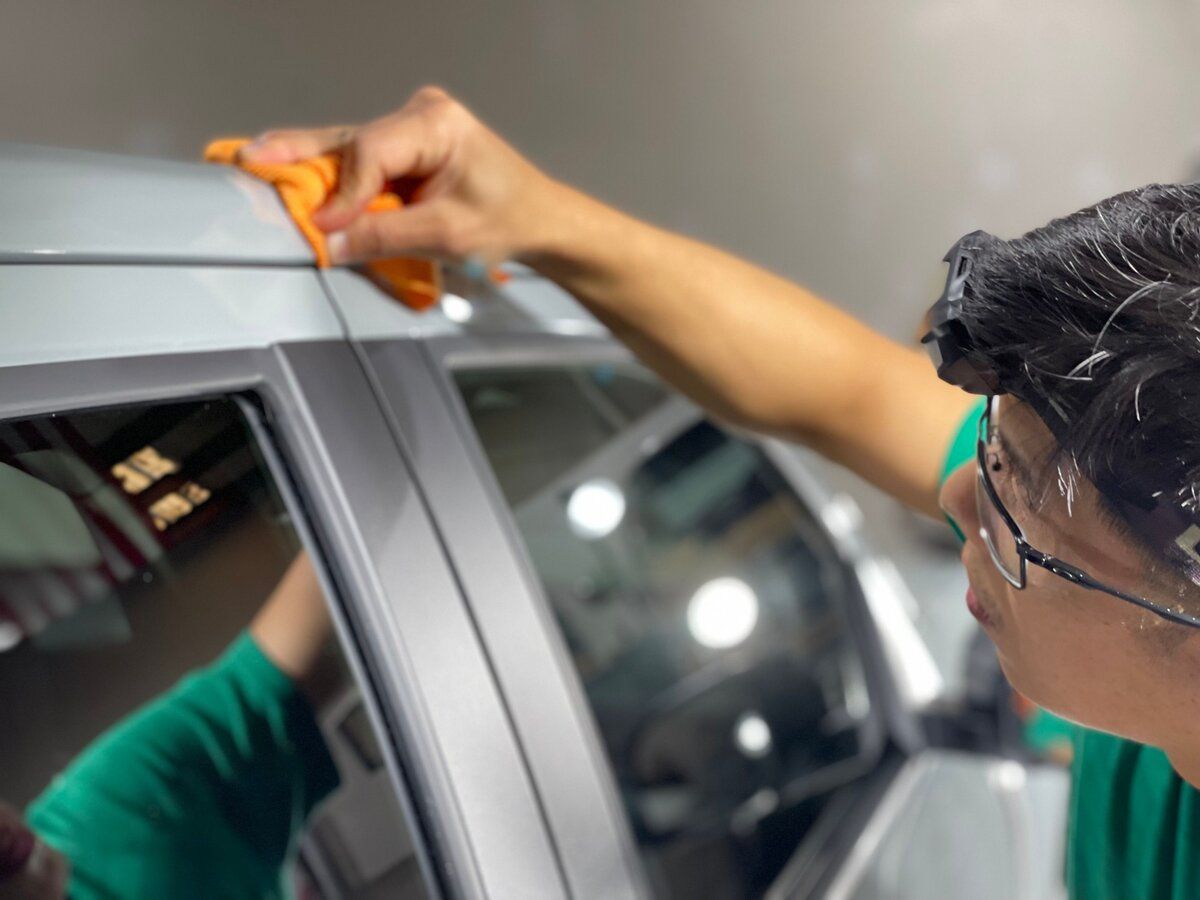

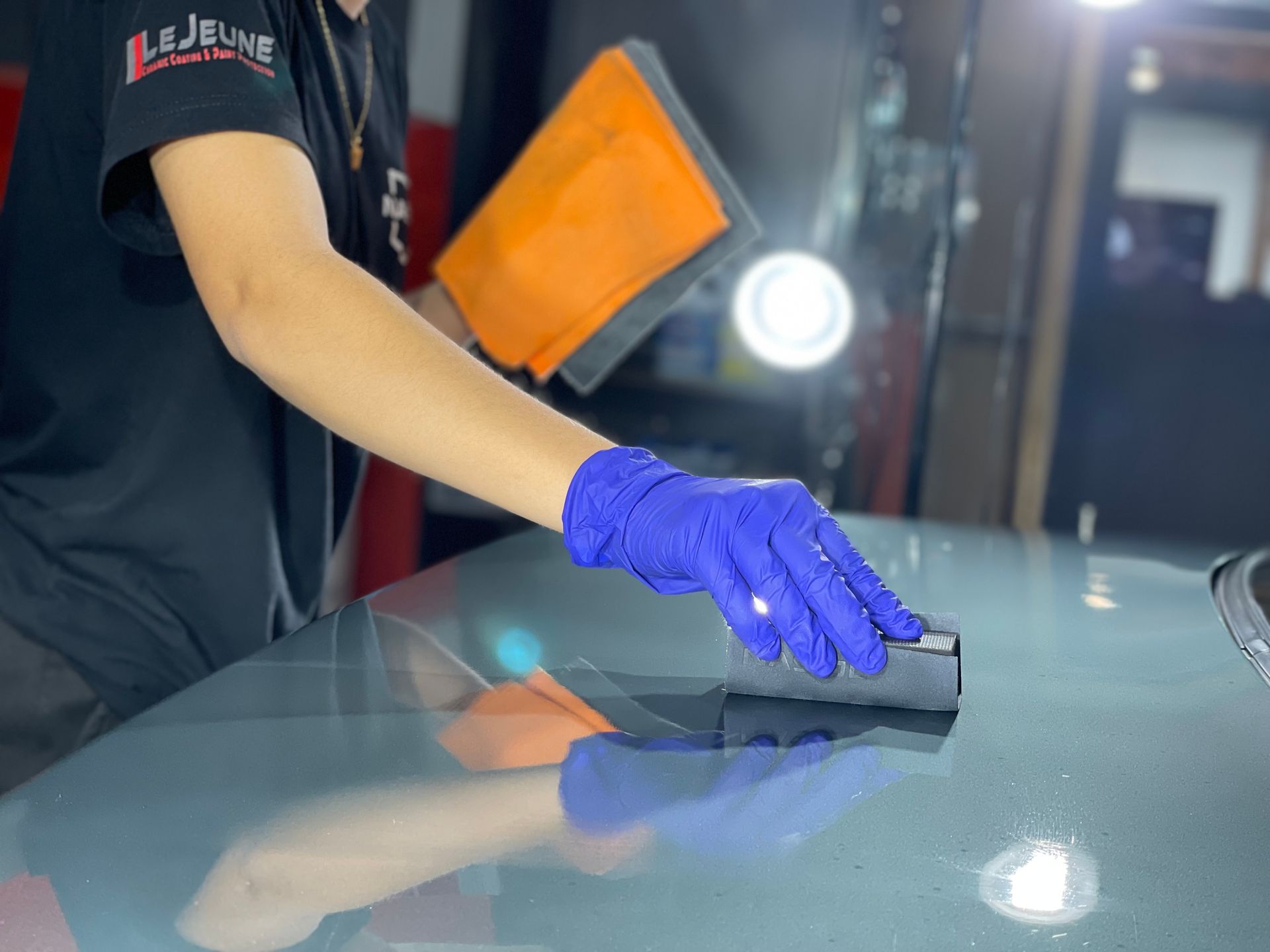
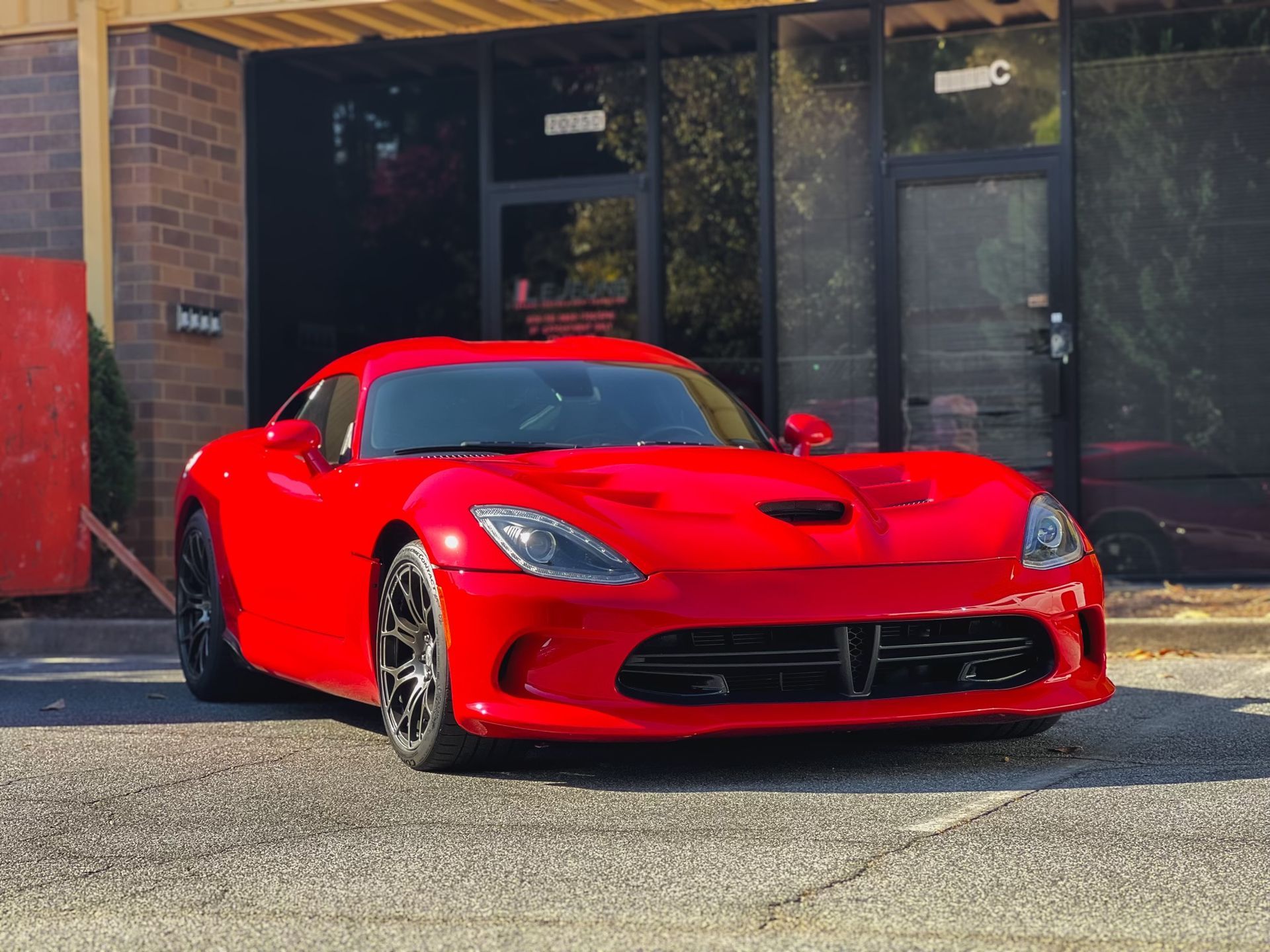

LeJeune Ceramic Coating & Paint Protection arrived on the auto detailing scene in 2019, built on the lifelong passion for car, truck, and SUV care and profound paint protection packages that feature high-end ceramic coatings, paint protection film, and even Dr. Beasley’s Matte Nano-Resin Pro. Always on staff, we have professional certified vehicle detailers and paint correction experts that bring and maintain vehicle value on all makes and models in the Marietta, Georgia area. Only at our auto detailing shop will you get the level of attention to detail and products that we work with.
Quick links
Our Location
2052 Airport Ct SE, Suite D Marietta, GA 30060 United States
CONTACT US
Phone: (770) 722-3486
Email: info@lejeunedetailing.com
Designed by the team at Detailers Roadmap, a platform developed for detailing operators across the globe.
All Rights Reserved | 8bitcreative, LLC | LeJeune Ceramic Coating & Paint Correction

